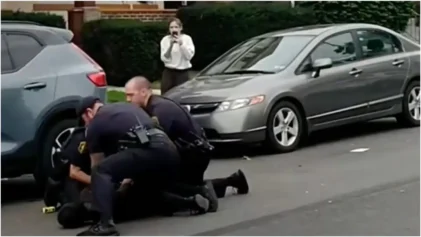New York, Philadelphia, Chicago and Detroit are steadily losing its Black residents to a phenomenon known as “reverse migration,” as increasing numbers of Black Americans flock to Southern cities for cheaper living.
According to the Chicago Crusader, the cities once considered meccas of Black wealth and culture are now shrinking, thanks in part to gentrification and deadly gun violence. A 2013 survey and U.S. Census data compiled by the paper showed the nation’s four largest cities with the highest Black populations have seen a steady decline since 2013.
Now, Black folks are flocking to the likes of Atlanta, Houston and Charleston — the same cities Black people migrated from during the Great Migration in the 1940’s and ’50s.
In New York, the city’s Black population dipped to 26 percent in 2015, down from 28 percent on 2010, according to Census Bureau data. Black folks now comprise just 22 percent of the city’s 8.5 million residents.
Meanwhile, in Harlem, fast-growing gentrification continues to take its toll, as longtime Black residents are priced out of the historic city. Today, only 28 percent of the city’s residents are Black, the newspaper reported.
Though Philadelphia still boasts the nation’s third-largest Black population, it’s experienced similar changes in its Black residency. In 2010, Black Americans made up 45 percent of the population, but that number dropped to 44 percent in 2015. The Black population currently accounts for 41 percent of the city’s more than 1.5 million residents.
Chicago has seen one of the most dramatic drops in its Black population in recent years. An estimated 14,000 residents fled Cook County between 2016 and 2017 and the “Windy City” has continued losing about 61,000 residents annually. Per the Crusader, many Black locals on city’s South and West Sides are leaving to escape gun violence and find more economic opportunities in the South. The mass exodus has the potential to drop the city from the third to the fourth-largest U.S. city behind Houston.
As for Detroit, which was once the nation’s third-largest predominately Black city, the city’s Black population dipped from 82 percent in 2010, to 80 percent in 2015 and 79 percent in 2016, according to Census data. The city’s overall population took at hit during the Recession.
Researchers say the changing urban landscape is likely fueled by the lower cost of living in the South. The metro-Atlanta region, in particular, is growing at a rapid rate and is on track to overtake Philly as the nation’s eighth-largest city by 2022. Census data showed 89,000 new residents moved to the region in 2017.


